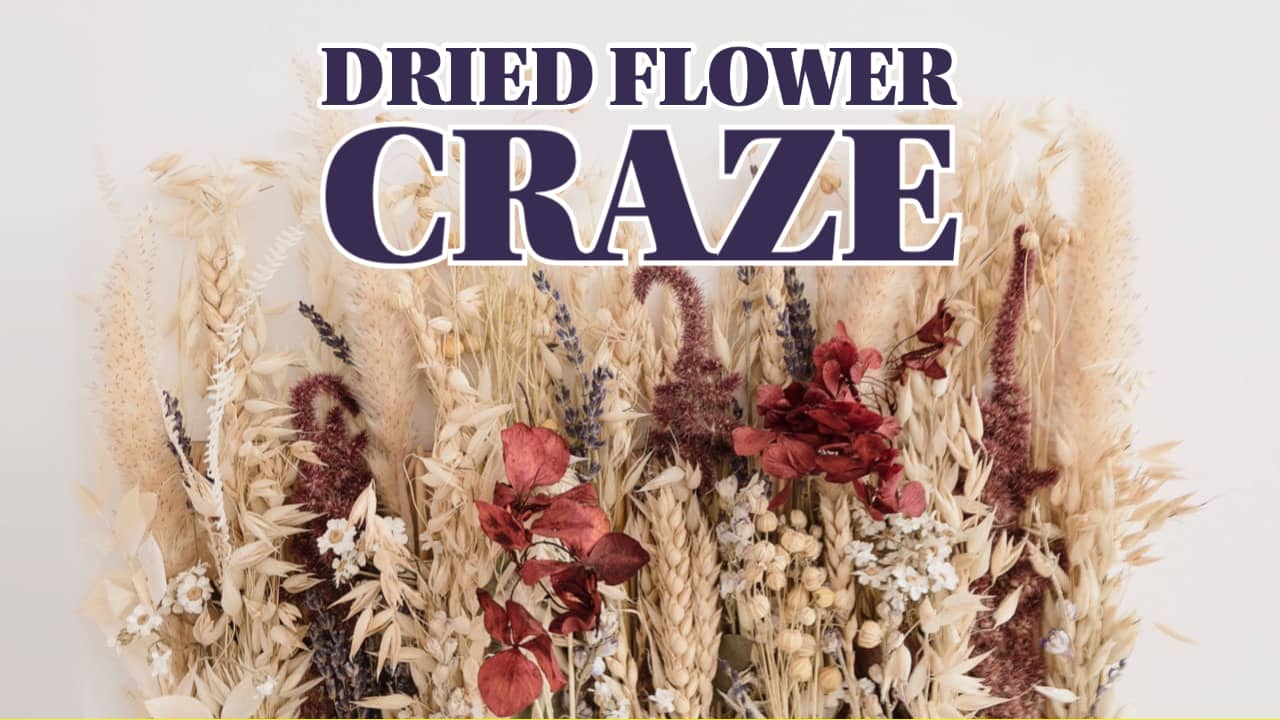
How to Import Dried Flowers Into New Zealand
5-minute read
Dried flowers have become one of the most sought-after interior trends worldwide.
According to the Guardian, a summer of cancelled weddings during the global pandemic and havoc in global supply chains, presenting unprecedented challenges for floral businesses everywhere, have led to a big new trend of the dried flower craze.
But did you know that to import dried or preserved flower or plant products into New Zealand, you’ll need to comply with an import health standard for your product and meet various treatment, packing, and biosecurity requirements.
Here’s a step-by-step process to see what’s involved.
STEP 1: WHAT YOU NEED TO KNOW
An overview of importing dried and preserved plant products.
Types of plant products
This import process includes dried and preserved plant products not intended for human consumption. Examples are:
- cut flowers, fungi, algae, lichen, and pot pourri that are dried, freeze-dried, bleached, or dyed
- liquid extracts and powdered and paste materials
- brushwood fencing, screens, garden frames, and other plant-based landscape materials
- dried herbarium specimens
- plant material preserved in alcohol
- cotton wool
- tobacco
- hops.
Plant products may be included in items like heat packs or cosmetics.
To import dried or preserved plant products successfully, you need to:
- know their components or ingredients
- comply with the phytosanitary import requirements listed in the import health standard (IHS)
- know about labelling and packaging requirements
- submit the required documentation
- organise your product to be treated, if needed, no more than 21 days before export
- get the tracking and freight details from the exporter
- know about product prohibitions and restrictions
- know about tariffs and permits, if required.

STEP 2: WHAT YOU NEED TO DO
The tasks you need to complete.
Identify what you’re importing
Before you know whether you can import your dried or preserved plant product, you need to identify its ingredients or composition. If it also contains animal products or therapeutic ingredients, you’ll need to follow different processes to get approval to import.
Comply with import health standard requirements
The import health standard (IHS) for dried or preserved plant products will tell you what you need to do to import your product into New Zealand. Please read it thoroughly to ensure you can comply with all requirements.
The IHS may require you to arrange pre-departure inspection and treatments and obtain a treatment certificate and/or a manufacturer’s certification.
Arrange pre-departure inspection and treatment, if needed
If you need to arrange inspections or treatment, contact your export broker or the National Plant Protection Organisation (NPPO) in the country of export to find out about approved inspection and treatment providers.
Obtain a treatment certificate
Request the treatment certificate from your export broker or treatment supplier. The invoice or batch information should match the treatment certificate details.
Obtain a manufacturer’s certificate
Request the certificate from an authorised exporter or manufacturing company representative, who can declare what type of manufacturing process was used and sign the certificate.
Options for when your product is not included in the IHS
If your product is not listed in the IHS, usually, you can’t import it. However, you can ask MPI about the possibility of adding it to the IHS. It’s also possible to ask MPI to consider developing a new IHS for your product.
MPI prioritises each request for a new IHS, and it may take several years to finalise your request.
Check other agencies’ import restrictions
Check with the New Zealand Customs Service whether:
- you can import the product without restriction
- the product will be subject to duties or tariffs
- an NZ Customs permit is needed.
All imported items must be cleared through Customs. Commercial items are anything you’re going to sell or use for your business.
Before you import anything, check the Prohibited and Restricted Import list to see whether:
- it’s allowed into New Zealand and/or
- it needs approval or consent first.
Before you can receive your goods – i.e. get Customs clearance for them – you must:
- submit an electronic import entry or electronic cargo entry (ECI) lodgement
- pay applicable Customs duties and Goods and Services Tax (GST)
- pay other applicable charges and levies
- submit appropriate documentation if required
Consider using a customs broker
A customs broker will help you get import entry clearance.
Check wood packaging requirements
If your consignment is shipped to New Zealand on wooden pallets or wood has been used to package any part of your consignment, you’ll also need to comply with the requirements for importing wood packaging to make sure there are no hidden pests or diseases.
Read the import requirements for using wood packaging
Apply for a permit
The IHS will tell you whether an import permit is needed for your product. If required, apply for a permit by completing the application form and returning it to MPI. Fees apply.
Submit all required documentation
You or your customs broker need to make sure that all of the required documents are submitted to NZ Customs or MPI within 48 hours of your consignment arriving in New Zealand.
If required by the IHS, the documentation may include:
- a copy of the phytosanitary certificate
- a manufacturer’s certificate
- treatment certificates
- the purchase invoice
- the bill of lading or air waybill
- a sea freight container declaration.

Comply with on-arrival inspections
An MPI inspector may check your documentation and the consignment when it arrives in New Zealand to see that it complies with the IHS. The inspector checks that:
- the consignment is as described
- correct labelling is used, if required
- the packaging is free of contaminants (detritus, soil, disease, and pests).
The MPI quarantine inspector may issue a Biosecurity Authority Clearance Certificate (BACC) that requires:
- the documentation to be corrected
- the consignment to have further treatment.
If your consignment doesn’t comply
If your plant product doesn’t comply with the IHS requirements or is seriously contaminated (such as with live organisms) when it arrives in New Zealand, you’ll need to do one of the following:
- treat your product (for example, by fumigation)
- identify the organism (and treat it if it’s a restricted pest)
- ship the product to another destination country
- destroy the product.
All treatments have to be done by an approved treatment provider at a transitional facility. You are liable for any costs associated with non-compliance or contamination.
STEP 3: GETTING YOUR IMPORT DOCUMENTS
How do you know you’ve met MPI requirements.
Your consignment will be given biosecurity clearance when all of the required documentation is complete, and MPI is satisfied that the entry conditions of the import health standard (IHS) have been met.
Uncleared products will have to be:
- further treated until they comply with the IHS
- shipped out of New Zealand
- destroyed.
The above information is intended as a guide only. Regulations can change without notice, and for specific guidance or questions about importing plant products, visit the MPI website or email plantimports@mpi.govt.nz.
Source: Ministry for Primary Industries and NZ Customs
P.S. Easy Freight Ltd helps New Zealand importers & exporters to save money on international freight and reduce mistakes by guiding how to comply with Customs and biosecurity rules.
➔ Contact us now to learn how we can assist you.
